Art World
Processing Trauma: Artist Bunny Rogers on Using Her Work to Explore the Columbine Massacre’s Lingering Impact
We spoke to the artist about her first major museum show at the Whitney.
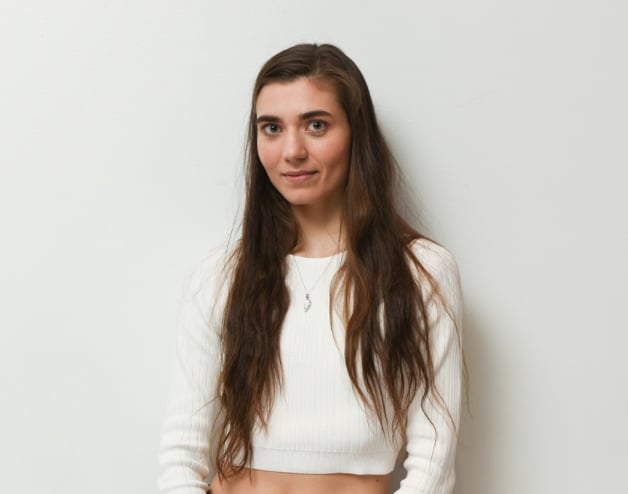
We spoke to the artist about her first major museum show at the Whitney.

Caroline Goldstein

If you haven’t yet heard of Bunny Rogers, take note. At only 27, with the ink still wet on her MFA diploma from the Royal Institute of Art in Stockholm, Bunny Rogers is poised to join the ranks of internationally acclaimed artists such as Anne Imhof and Ian Cheng, with the full faith and credit of a solo exhibition at New York’s Whitney Museum of American Art.
Since graduating from Parsons School of Design in 2012, Rogers has put forth a trio of works that focuses primarily on the Columbine High School Massacre, where in 1999 Eric Harris and Dylan Klebold went on a shooting rampage, resulting in 15 dead (including Harris and Klebold) and 24 injured.
In two previous exhibitions, “Columbine Library” (2014) and “Columbine Cafeteria” (2016), Rogers reconstructs these main sites of trauma—the cafeteria and library were the two central points of the school shooting. These installations often incorporate found objects such as school library chairs and cafeteria tables, alongside plush toys and school bags inspired from the MTV’s cartoon show Clone High. The artist also makes animated videos featuring some of the characters of Clone High placed inside different areas of Columbine High School.
In her first major museum exhibition, “Brig Und Ladder,” now on view at the Whitney Museum in New York, Rogers implements the visual markers she defined in the previous two shows to complete the third segment of her trilogy. The show opens with an animated video, A Very Special Holiday Performance in Columbine Auditorium, playing in front of a row of auditorium seats. On screen, three stylized Clone High characters perform a Russian rendition of the musical number “Memory” sung by the former glamour-cat Grizabella in Cats. While the song and the musical are often maligned as schmaltzy, the nostalgic ballad is not only a personal favorite of Bunny’s, but also functions as a sign for the character’s fall from grace.
Recently artnet News sat down with the artist to discuss her new work and her fixation with the infamous tragic event.
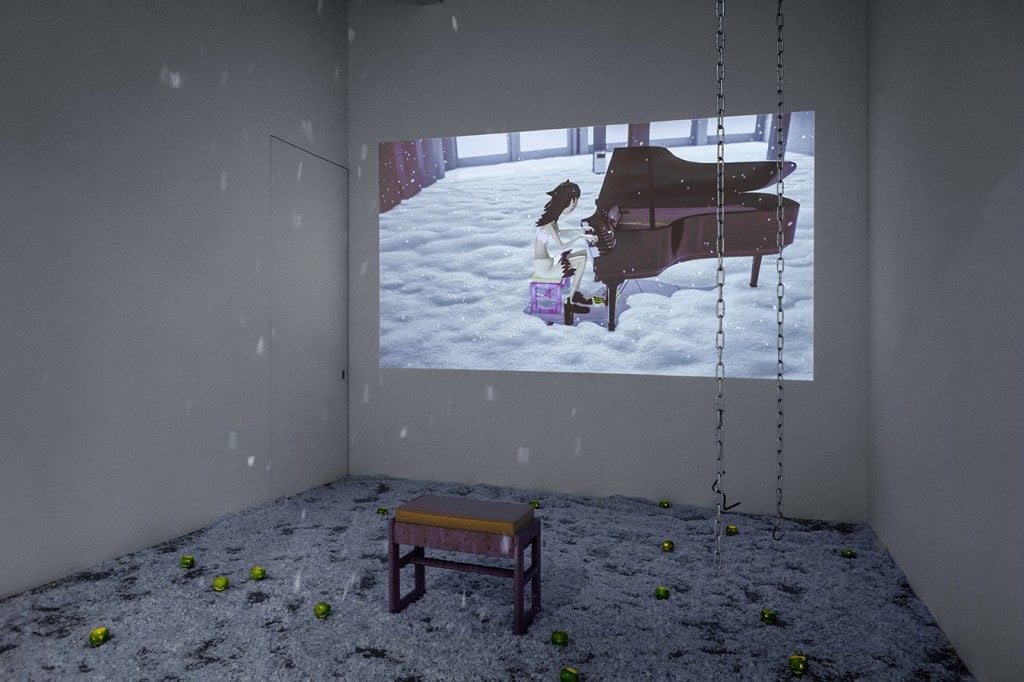
Bunny Rogers, still from Mandy’s Piano Solo in Columbine Cafeteria (2016).
When did you start making art seriously?
The art that I’m making right now, I would say I started making maybe two years into college, probably when I was about 20. But I’ve always been interested in making things: clothing, websites, drawings, poetry. I wanted to be a fashion designer, although I didn’t know what that meant at the time. In my head I thought, “Oh I want to make one-of-a-kind beautiful costumes.” Then I got into Parsons, which was the best school to go to for fashion design, and it wasn’t what I thought it would be. And my boyfriend at the time—someone I’ve collaborated with a lot—made the suggestion that I go into fine arts, because you can do whatever you want. That was probably one of the most important moves I ever made. So I’m indebted to him.
So after you graduated from Parsons in 2012, you later went onto graduate school at the Royal Institute of Art in Stockholm, where you just completed your MFA in 2017. When did you have your first show?
In 2013, I did a residency program at Appendix Project Space in Portland, Oregon. It was an art space that operated out of a garage. I did a show called “Shades of berny.” But the very first solo show I did was “Questions on Ice” at Jasper Spicero’s Generation Works, which took place in his mother’s foreclosed apartment, in Tacoma, Washington.
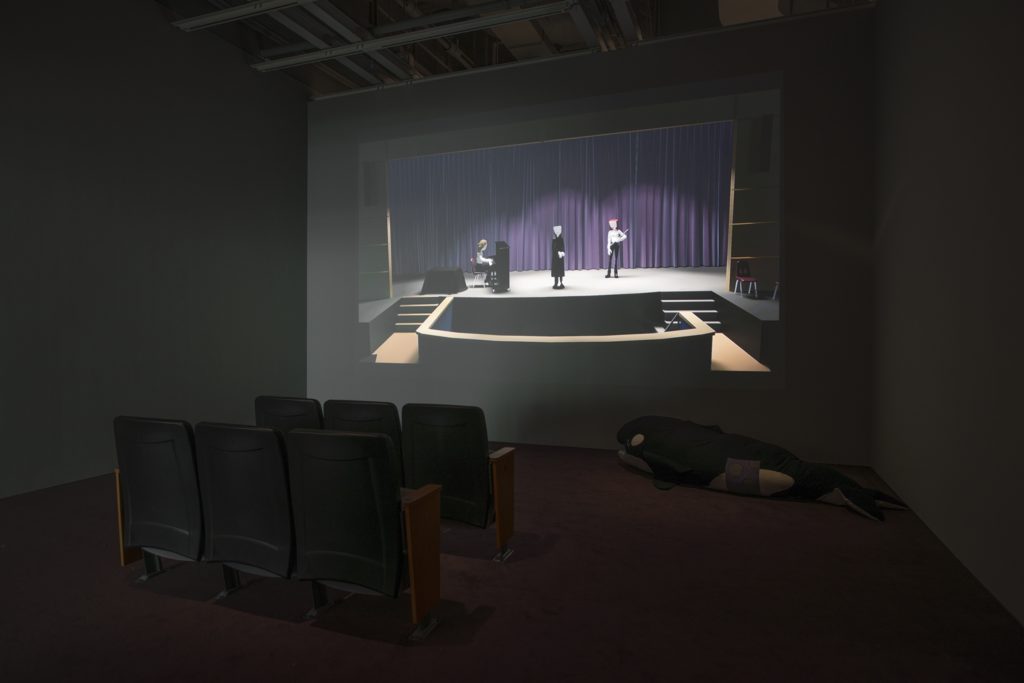
Installation view of Bunny Rogers: Brig Und Ladder (Whitney Museum of American Art, New York, July 7–October 9, 2017). From left to right: Columbine Auditorium seating, (2017); A Very Special Holiday Performance in Columbine Auditorium (2017); Tilikum body pillow (2017). Photograph by Bill Orcutt.
It is really impressive that you have this platform at the Whitney, right as you finish graduate school. How did the show at the Whitney “Brig Und Ladder” come together?
I met an assistant curator at the Whitney a few years ago. She and I started talking, very casually, and kept in touch over the years. After a while, they asked me if I wanted to do the show. It was a big surprise for me.
The experience has been intense and overwhelming, but also really exciting. I’m really happy that I got to have this space to myself, because I often think of artworks in the context of an installation. So to have my own room was really freeing. I basically got to do exactly what I wanted to do, which was really ideal.
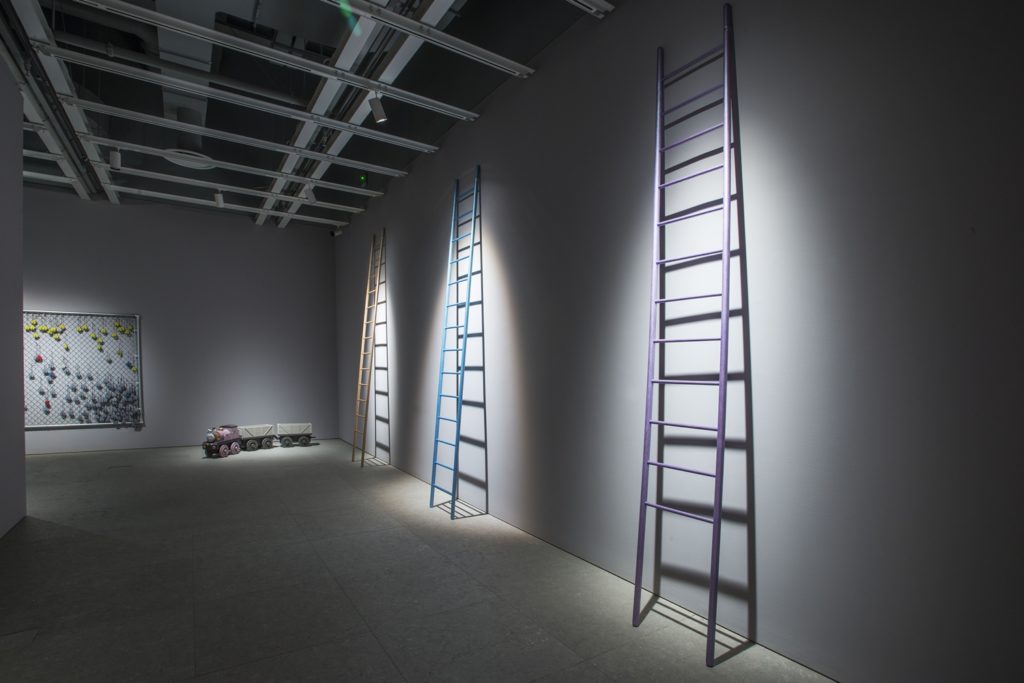
Installation view of Bunny Rogers: Brig Und Ladder (Whitney Museum of American Art, New York, July 7–October 9, 2017). From left to right: Memorial wall (fall) (2017); Lady train set (2017); Ladder 12 (2017); Ladder 14 (2017); Ladder 13 (2017). Photograph by Bill Orcutt.
In two recent exhibitions, “Columbine Cafeteria” and “Columbine Library,” the titles reference the Colorado school shooting from 1999, perhaps the first instance of a national tragedy connected to a school shooting. And in the Whitney show, “Brig Und Ladder,” you use some of the visual symbols from those works—the animated character playing piano, for instance, and the mops. Why is this event a touchstone for your work?
It fully saturated the media. The Columbine shooting affected me in ways that I wouldn’t even fully understand the gravity of until I was older.
I also remember noticing the communal nature of the grieving for this horrible tragedy. It was an isolated incident, but it felt like it really impacted our entire world. But like many of us, we were mourning this event through the media. I also felt that way on September 11th.
Exactly, on television. It was ubiquitous.
Media shifted to where now you choose the channel you want to follow. When I was younger, it felt like something happened and you saw it everywhere. The footage for the Columbine shooting is so clear in my memory. I’m able to recall it with such visual accuracy. It’s as if it exists in my head as a reel.
I want to allow for complex ways of viewing and articulating a trauma. Because otherwise, you can never really pull apart your feelings toward something that has happened, and eventually relate it to others. Talking about trauma is going to be problematic. It touches places within you that you don’t even know about. And things bubble up. You can ignore it, and keep swallowing it—I definitely still do that all of the time. But a lot of reactions and ways of registering things are automatic. For me, this is an attempt to understand the processing of trauma.
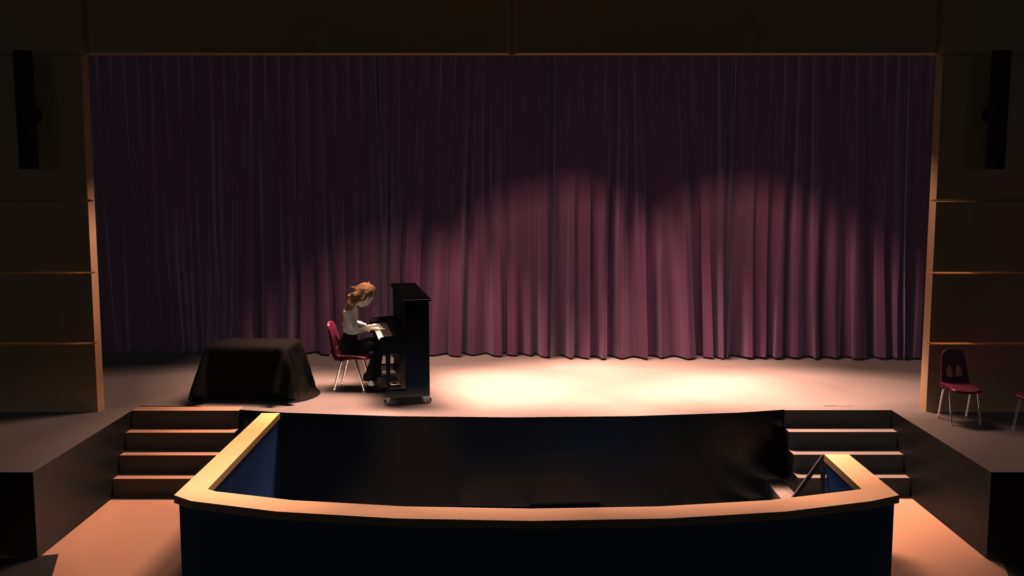
Bunny Rogers, still from A Very Special Holiday Performance in Columbine Auditorium (2017). Collection of the artist, courtesy Société, Berlin.
One aspect of the so-called “trauma culture” is the way that strangers respond to tragedy. For example, people will often leave teddy bears and notes for victims. There always seems to be a fine line between actual mourning and the fetishization of trauma and grief, especially en masse. Is that an aspect of visual representation of trauma that you consider?
Absolutely, I’m very aware of it. Especially when I first started researching and reading as much as I could about Columbine—all of the books that had been published, and the countless online message boards where people are still discussing Columbine, even 20 years later. This event was incredibly devastating for so many people. And some people are still trying to figure out, factually, what happened, which is amazing to me. You can have the exact time line, but still feel like there are holes.
People fixate on the endless material to look through; the notebooks and the thousands of pages of police reports. But on the other side of the spectrum, there are people who are most concerned with Dylan and Eric. And that could be a somewhat romantic, sexual attraction. I don’t even think that some people recognize it as such. They just seek out a better understanding of these two people that committed this act of violence and then killed themselves. So it may come from a romantic interest, but also an intellectual interest, where it is more about the psychology of children and teenagers that commit these acts of violence.
I feel like looking into the online responses—because it has had 20 years to accumulate—gives you a really good sense of how Columbine has registered for so many people, including people that it directly affected. Blogs about Columbine that are run by people who were involved in some way exist too. Just this past year, Dylan Klebold’s mother released a book detailing her sorrow over what her son did, and the burden she still feels. And that’s 20 years later. So I think for these types of tragedies, you can’t underestimate the longterm traumatic effects.
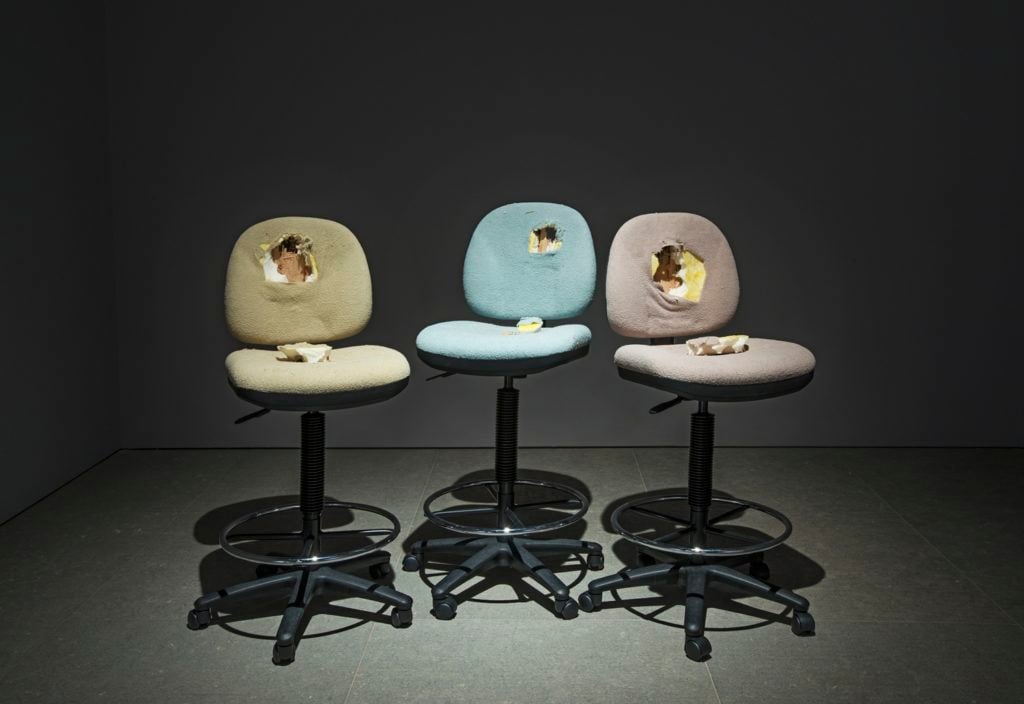
Installation view of Bunny Rogers: Brig Und Ladder (Whitney Museum of American Art, New York, July 7–October 9, 2017). Computer chair A (Reject), Computer chair D (Reject), Computer chair C (Reject) (2017). Photograph by Bill Orcutt.
Of course Columbine is the first thing people hear or see in regards to your work, but there are also other things that inspire you as well. On the audio tour of the Whitney show, you talk about Clone High, a short-lived animated TV show that illustrated essentially famous women from history, but reimagined as high school girls. These archetypes of powerful women are reduced to an animated version.
Flatness, exactly. When I was a kid, and even now, I connect very deeply with television, and characters on TV, as well as in books and in movies. Those characters were real to me, the way that my Neopets were real to me. I wished that I could visit Neopia, and why couldn’t I. So I ended up writing about it, and that ended up fulfilling a desire for me. It wasn’t completely satisfying, but it helped me to understand how to coalesce this identity that I feel like I should have, or should embody, completely.
You work a lot with technology, using animation and referencing websites and computer games. But you also incorporate different materials such as plush toys and found objects. Is this a conscious decision on your part, to juxtapose these two worlds, the digital and the material?
The end goal is visualizing a world, specifically, my inner world I guess. And I’m always seeking to make that happen. The palette in “Brig Und Ladder,” and some of the symbols, like the flags, are very important to me, and make references to a specific relationship that I had. I’ve spoken a lot about this “perfect audience of one.” It’s almost a reflection of me goes to see the show, and gets every reference, knows exactly what I’m saying, and feels my sorrow. I’ve realized that people can still register the loss, without knowing exactly what it is that I’m describing.
I read something recently where someone said the work looks “just dated,” which is interesting to me, because it doesn’t look dated to me. I’m using things that are currently of interest to me. But I understand how someone sees it as dated. My hope is that even with those things, you can swap them out—the Clone High characters, for instance—for characters that you connect with. They’re basically just stand-ins for me too. So my hope is that the feelings register, regardless.
“Brig Und Ladder” is on view at the Whitney Museum of Art, New York, July 7–October 9, 2017.